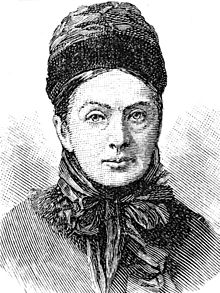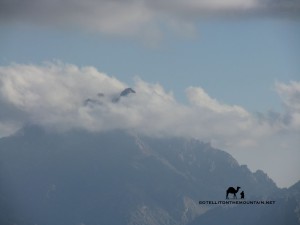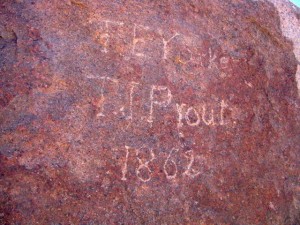October 11, 2014
The Sinai: in five travellers…
 Travel writing about Egypt stretches back thousands of years; the Greek historian Herodotus was writing about travel here in the 5th century BC. Over history, it’s probably been one of the most written-about travel destinations in the world. But the Sinai’s different. Faraway from the Nile, out on Egypt’s frontiers, it’s always been hard to reach. Things changed a bit in the 19th century, with travel becoming easier, and plenty of intrepid types made the trip to Mount Sinai. A golden age of travel writing followed, with lots of travellers keeping diaires; some of which are still brilliantly readable today. Since then, few folks have written about the Sinai. I wish we had accounts of Bedouin travellers. But, being a people of the spoken word, they never recorded their journeys. Anyway, here are five of the most interesting travellers we DO know about.
Travel writing about Egypt stretches back thousands of years; the Greek historian Herodotus was writing about travel here in the 5th century BC. Over history, it’s probably been one of the most written-about travel destinations in the world. But the Sinai’s different. Faraway from the Nile, out on Egypt’s frontiers, it’s always been hard to reach. Things changed a bit in the 19th century, with travel becoming easier, and plenty of intrepid types made the trip to Mount Sinai. A golden age of travel writing followed, with lots of travellers keeping diaires; some of which are still brilliantly readable today. Since then, few folks have written about the Sinai. I wish we had accounts of Bedouin travellers. But, being a people of the spoken word, they never recorded their journeys. Anyway, here are five of the most interesting travellers we DO know about.
1. EDWARD HENRY PALMER Palmer grew up an orphan, spending a lot of time with Romany Gypsies and developing a love of travelling, nomadic peoples. He was diagnosed terminally ill aged 19 – with just a few months to live – but recovered and went on to study langauges at Cambridge University. He finished with a 3rd class degree, the lowest possible. But his brilliant language skills outshone the exam results and he was soon made a professor. Soon after, he was employed as the interpreter on the 1869 British Ordnance Survey of Sinai. Through him – his Arabic and his way with people – his colleagues put together the best survey ever made on the area. He wrote The Desert of The Exodus – a beautiful account of his travels – before being killed here in 1882.
 2. ISABELLA BIRD Most stuff about the Sinai is written by men. Isabella Bird was one of the few women who wrote anything. She was fiercely independent and adventurous with a wanderlust that drove her all the way from the Rocky Mountains to Tibet and Kurdistan. She covered thousands of kilometres in her lifetime, a lot of them on horseback. She visited the Sinai in the 1870s, swapping her horse for a camel and following the old route of The Exodus to Mount Sinai. She captured the beauty of the Sinai and its people as well as anyone, all with a cutting, self-deprecating humour.
2. ISABELLA BIRD Most stuff about the Sinai is written by men. Isabella Bird was one of the few women who wrote anything. She was fiercely independent and adventurous with a wanderlust that drove her all the way from the Rocky Mountains to Tibet and Kurdistan. She covered thousands of kilometres in her lifetime, a lot of them on horseback. She visited the Sinai in the 1870s, swapping her horse for a camel and following the old route of The Exodus to Mount Sinai. She captured the beauty of the Sinai and its people as well as anyone, all with a cutting, self-deprecating humour.
3. SIR JOHN MANDEVILLE Held up as a travelling hero through the Middle Ages, Sir John was an English knight who penned his memoirs in retirement. Or that’s what he said, anyway. He was branded the ‘greatest liar OF ALL TIME’ a few centuries later. Honestly, nobody really knows if Sir John existed. Or who the author of his stuff was, if it wasn’t him. The likelihood is his memoirs were written up from a mishmash of other diaires. Whatever the story, I can say that the Sinai bits ARE very evocative. That they DO capture something of a much, much more distant time here. Also that – whoever wrote his stuff – compiling such a huge, complex narrative was a feat surpassed only by the epic chutzpah of passing it off as his own travels for a few hundred years.
 4. JEAN LOUIS BURCKHARDT Burckhardt was born into the Swiss aristocracy; he moved to Germany when he was young, before travelling to England, becoming almost destitute in London and landing a dream role as an explorer in the Middle East. He spent a couple of years in Syria, perfecting his Arabic so he’d really understand the region. Later, he won immortal fame as the first European to see the ancient Nabataean city of Petra, before going to the Sinai, making notes upon which later explorers built and which are still brilliant to read today.
4. JEAN LOUIS BURCKHARDT Burckhardt was born into the Swiss aristocracy; he moved to Germany when he was young, before travelling to England, becoming almost destitute in London and landing a dream role as an explorer in the Middle East. He spent a couple of years in Syria, perfecting his Arabic so he’d really understand the region. Later, he won immortal fame as the first European to see the ancient Nabataean city of Petra, before going to the Sinai, making notes upon which later explorers built and which are still brilliant to read today.
5. GEORGE W. MURRAY Hailing from the Scottish highlands, George Murray took his love of high places all the way to the mountains of Egypt. He worked on the British Survey of Egypt, mapping the Red Sea Mountains from Hurghada to Jebel Elba, moving south at a degree of latitude every year; he also mapped the Sinai’s mountains. Without a doubt, he climbed more mountains in Egypt than any traveller before him. I’d say probably more than any since too. The Sinai was one of his great loves and he walked far and wide, seeking out its hardest peaks and its most little-known wadis, even when he wasn’t working. He’s one of the great unsung heroes of mountaineering in Egypt and you can read his memoirs in the beautifully-titled book Dare Me To The Desert.


